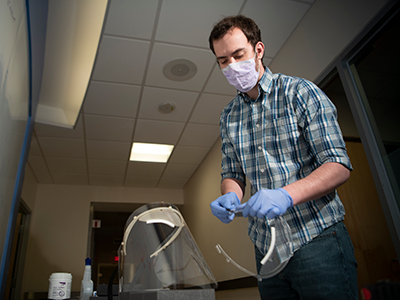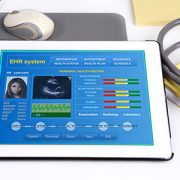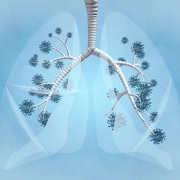Multidisciplinary team develops innovative PPE that fits clinical needs during COVID-19

Children’s National engineers and clinicians developed plexiglass shields for testing sites, comfortable face shields for clinical providers, affordable oversized breath shields for ophthalmology and 3D printed flip-up attachments to the safety goggles for nurses.
The Children’s National Hospital innovation working group shares a retrospective on their local experience in mobilizing resources to offer relief following the personal protective equipment (PPE) shortages at the beginning of COVID-19. Engineers and clinicians developed plexiglass shields for testing sites, comfortable face shields for clinical providers, affordable oversized breath shields for ophthalmology and 3D printed flip-up attachments to the safety goggles for nurses.
The study, published in the Surgical Innovation Journal, narrates a series of events that occurred at the beginning of the pandemic, where the increased demand for personal protective equipment (PPE) usage in healthcare personnel skyrocketed and led to a severe national shortage. Still, the multidisciplinary approach at Children’s National facilitated the response and preparedness to the emerging situation back in March of 2020, serving as a framework for the current and future challenges.
To meet the needs of one of the busiest pediatric emergency departments in the country, the researchers aimed to develop a plexiglass shield that was reliable, reusable and practical while staying pediatric-friendly. The prototype had advantages and disadvantages while administering a COVID-19 swab test in a tent.
The 2020 FDA Emergency Authorization Use (EUA) issued in April provided manufacturing guidelines to produce face shields. Given the federal support, innovators at Children’s National, in partnership with GCMI, designed a rigid and foam prototype. Both prototypes were measured by comfort, visibility, breathability, ability to perform the job, durability, stability, fit and easy assembly. The rigid prototype performed the highest in all metrics and it had few adjustments after various tests.
“While the FDA has become nimbler as evidenced by rapid issuance of EUA of the vaccines, regulatory concerns are still paramount,” Operfmann et al. write. “Having staff experienced with regulatory processes is important to introduce new regulated devices.”
In May 2020, there was also a production lag on the available oversized breath shields for ophthalmology slits, which cost between $35 and $40. To lift the burden, the researchers designed and produced in-house a cost-effective oversized breath shield for less than $9. They used a 40 W laser machine to cut through the thick clear cast acrylic while following the compatible measurements of commercial lamps. The team also distributed the breath shields to other Children’s National regional clinics.
Within the nursing staff, the main factor associated with abiding to PPE compliance is the usage of safety goggles before entering a room. But in time-sensitive situations like patients with severe COVID-19 symptoms, the equipment can be easily forgotten. To support busy shifts, researchers designed a 3D printable attachment valued at $5 for safety goggles, which are more comfortable to keep on, even during downtime. The efficacy of the flip-up attachment is yet to be determined in an upcoming trial.
“Hospitals have already begun augmenting their disaster preparation plans and ensuring they have adequate stockpiles of equipment for future events,” Opfermann et al. write.
Children’s National authors on the study include: Justin Opfermann, M.S., Anuradha Dayal, M.D., Alyssa Abo, M.D., M.B.A., Tyler Salvador, B.S., Kolaleh Eskandanian, Ph.D., M.B.A., P.M.P., Raven McLeese, R.N., and Kevin R. Cleary, Ph.D.











